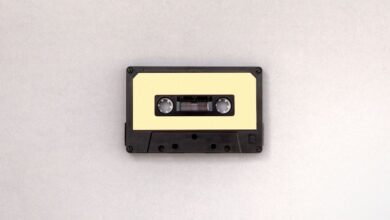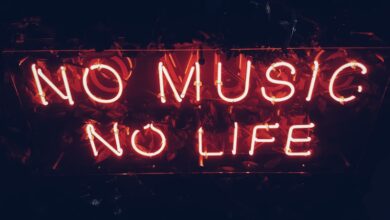The Enduring Legacy of the Recorder: An Instrument of Many Eras

The recorder, an instrument with a rich history, has left an enduring legacy that spans many eras. Its melodious notes can transport us through time and evoke a sense of nostalgia. But what is it about this seemingly simple instrument that captivates us even today?


Dating back to medieval times, the recorder’s origins can be traced to the Middle Ages. It gained popularity during the Renaissance period, becoming a staple in courts and households alike. Its distinct sound, reminiscent of birdsong, enchanted listeners and earned it a place in the hearts of musicians and music lovers.
Fast forward to the Baroque era, and the recorder’s significance only grew. Composers such as Johann Sebastian Bach and Georg Philipp Telemann showcased its versatility by incorporating it into their compositions. The recorder soared to new heights, displaying its ability to convey both joyous and melancholic emotions with ease.
As time marched on, the recorder witnessed a decline in popularity. However, it experienced a revival in the 20th century, thanks to visionary musicians who recognized its unique charm. Today, it continues to be embraced by performers, educators, and enthusiasts around the world.
One of the recorder’s greatest strengths lies in its accessibility. Unlike many other instruments, the recorder is relatively easy to learn, making it an ideal choice for beginners, especially young children. Its simple fingering system and compact size allow players to quickly produce pleasing sounds, fostering a sense of accomplishment and encouraging further exploration.
Moreover, the recorder’s portability adds to its appeal. Whether you’re sitting in a park, gathered around a campfire, or simply enjoying the comfort of your home, this instrument can be carried anywhere, allowing for impromptu musical gatherings and shared moments of joy.
From Medieval Courts to Modern Classrooms: Exploring the Timeless Appeal of the Recorder
Introduction:
Have you ever wondered about the origins and enduring popularity of the recorder? This humble musical instrument, often associated with elementary school music classes, has a fascinating history that stretches back centuries. From its presence in medieval courts to its place in modern classrooms, the recorder has captivated generations with its enchanting melodies and accessible nature.

The Versatile Sound of the Recorder:
Despite its simple appearance, the recorder possesses a remarkable range of expressive capabilities. Its sweet, flute-like tones can evoke a sense of nostalgia, transport us to distant lands, or conjure images of courtly elegance. The recorder’s versatility makes it suitable for various musical genres, from classical to folk and even contemporary compositions. Whether played solo or as part of an ensemble, this timeless instrument never fails to leave a lasting impression on both players and listeners alike.
Medieval Origins and Renaissance Resurgence:
The recorder’s journey begins in medieval times when it graced the courts of kings and queens. Its portable size and melodic charm made it a favored choice among royals and nobles. However, it didn’t end there. During the Renaissance period, the recorder experienced a resurgence, becoming an integral part of chamber ensembles and orchestras. Its popularity soared as renowned composers, including Johann Sebastian Bach and George Frideric Handel, composed beautiful pieces specifically for the instrument.

A Staple in Music Education:
Fast forward to the present day, and the recorder has found a special place in music education. Its affordability, ease of learning, and compact size make it ideal for introducing children to the joys of making music. By teaching students to read sheet music and develop breath control and finger coordination, the recorder serves as a gateway to further musical exploration. It allows young learners to experience the thrill of creating harmonies and melodies firsthand, fostering a lifelong appreciation for music.
Conclusion:
The recorder’s journey from medieval courts to modern classrooms is a testament to its timeless appeal. Its distinctive sound, versatility, and accessibility have ensured its enduring presence throughout the ages. Whether you’re a student, professional musician, or simply someone who appreciates beautiful melodies, the recorder continues to delight and inspire, connecting us to the rich musical heritage of the past while remaining relevant in the present. So, next time you hear the gentle trill of a recorder, take a moment to appreciate the centuries of joy it has brought and the countless more it will undoubtedly create in the future.
Unlocking the Secrets of the Recorder: Unveiling its Historical Significance and Versatility
Have you ever wondered about the secrets hidden within the enchanting sounds of the recorder? This unassuming instrument holds a rich history and surprising versatility that continues to captivate musicians and listeners alike. Let’s embark on a journey to uncover the fascinating details behind the recorder’s historical significance and its wide-ranging capabilities.
Dating back centuries, the recorder has stood the test of time as one of the oldest woodwind instruments. Its roots can be traced to medieval Europe, where it gained popularity in royal courts and among common folk. The recorder’s sweet and melodious tones resonated through grand halls, capturing hearts and stirring emotions. Its influence spread throughout the Renaissance and Baroque periods, becoming an essential instrument in orchestras and chamber ensembles.
What sets the recorder apart from its counterparts is its simplicity and accessibility. With its straightforward fingering system and uncomplicated structure, it serves as an ideal starting point for aspiring musicians. Children and beginners find solace in the recorder’s gentle learning curve, allowing them to develop fundamental musical skills while exploring their creativity. Moreover, its portable nature makes it a popular choice for musicians on the go.
But don’t let its apparent simplicity deceive you, for the recorder possesses a remarkable versatility that transcends genres and styles. From delicate melodies in classical compositions to lively tunes in folk music, the recorder seamlessly adapts to various musical expressions. Its hauntingly beautiful timbre lends itself well to solo performances, blending effortlessly with other instruments in ensembles, or even accompanying vocalists.
In addition to its classical heritage, the recorder has found its place in contemporary music. Popular artists have embraced its unique sound, incorporating it into modern compositions across genres like pop, rock, and jazz. Its distinctive character adds a touch of nostalgia and authenticity, infusing songs with a sense of warmth and familiarity.
The recorder’s historical significance and versatility make it a cherished instrument, treasured by musicians and enthusiasts around the world. Its timeless allure transports us through the annals of history while continuing to find relevance in today’s diverse musical landscape. So, whether you’re a seasoned player or a curious listener, let the recorder unlock its secrets and enchant your ears with its captivating melodies.
Melodies of the Past and Present: How the Recorder Continues to Shape Musical Expression
Introduction:
Have you ever wondered how a simple instrument like the recorder can create such enchanting melodies? The recorder, with its humble origins dating back centuries, continues to captivate musicians and listeners alike with its unique charm. In this article, we will explore how the recorder has evolved through time, its impact on musical expression, and why it remains relevant in today’s music scene.
The Recorder’s Historical Journey:
Throughout history, the recorder has played a significant role in various musical traditions. Originating in medieval times, this woodwind instrument was often associated with courtly music, adding elegance and grace to compositions. Its haunting yet versatile sound ensured its popularity during the Renaissance and Baroque periods, where it became an essential part of orchestras and chamber ensembles.
Musical Expression and Unique Tones:
The recorder’s enduring appeal lies in its ability to evoke emotions through its gentle and expressive tones. Its clear, flute-like sound possesses a purity that can transport listeners to another time and place. Whether performing delicate melodies or lively dance tunes, the recorder’s range allows musicians to convey a wide spectrum of emotions, creating a profound connection between the performer and the audience.
Versatility Across Genres and Styles:
Despite its historical roots, the recorder has successfully transitioned into modern contexts, finding its place in contemporary music genres as well. From classical to folk, jazz to pop, the recorder has proven its versatility by seamlessly blending into diverse musical landscapes. Artists and composers continue to explore innovative ways to integrate the recorder’s unique timbre, breathing new life into traditional and unconventional compositions.
Educational Significance and Accessibility:
Another remarkable aspect of the recorder is its instrumental role in music education. As one of the first instruments taught to many children, it serves as a gateway to understanding musical concepts such as pitch, rhythm, and breath control. Its relatively simple fingerings and affordable price make it accessible to learners of all ages, fostering a love for music and nurturing future generations of musicians.

Conclusion:
The recorder’s melodies have endured the test of time, transcending centuries and continuing to shape musical expression in both traditional and contemporary settings. From its historical origins to its adaptability across genres, this unassuming instrument holds a special place in the hearts of musicians and listeners alike. So, let the enchanting melodies of the recorder whisk you away on a journey through the past and present, and discover the timeless beauty it brings to the world of music.
Reviving Renaissance Sounds: Musicians Embrace the Recorder’s Resurgence in Contemporary Music
Are you tired of the same old tunes dominating the airwaves? Yearning for something fresh and exciting that will transport you to another era? Look no further than the resurgent sounds of the recorder, an ancient instrument making a remarkable comeback in contemporary music. Yes, you heard it right! Musicians worldwide are embracing the recorder’s enchanting melodies, infusing modern compositions with a touch of Renaissance flair.
The recorder, often associated with medieval minstrels and baroque orchestras, has found a new home in today’s musical landscape. Its hauntingly beautiful tone and versatility have captivated artists seeking to add a distinctive twist to their compositions. From folk to rock, classical to experimental genres, the recorder is casting its melodic spell across a wide range of musical styles.
Why the sudden renaissance of interest in this seemingly humble instrument? Well, it turns out that the recorder offers a unique sonic palette that resonates deeply with listeners. Its flute-like timbre evokes emotions and imagery reminiscent of bygone eras. As musicians explore uncharted territories, they find the recorder’s expressive capabilities a perfect fit for conveying both delicate nuances and powerful melodies.
In addition to its timeless appeal, the recorder’s accessibility plays a significant role in its resurgence. Unlike many complex instruments that require years of practice, the recorder can be learned relatively quickly. Its user-friendly nature makes it an attractive option for aspiring musicians and established artists alike. Whether you’re a seasoned instrumentalist or a curious beginner, the recorder invites you to unleash your creativity and contribute to the revival of its melodious heritage.
As we witness the recorder’s return to the forefront of contemporary music, we can’t help but celebrate the artistic freedom it brings. The instrument’s seamless integration into various genres challenges preconceived notions of what constitutes “modern” or “traditional” music. It breaks down barriers, fusing the best of both worlds and opening doors to unexplored sonic territories.
So, prepare to be mesmerized by the ethereal sounds of the recorder as it weaves its magic into the fabric of contemporary music. Join the movement, embrace the revival, and let the recorder’s melodies whisk you away on a journey through time.




